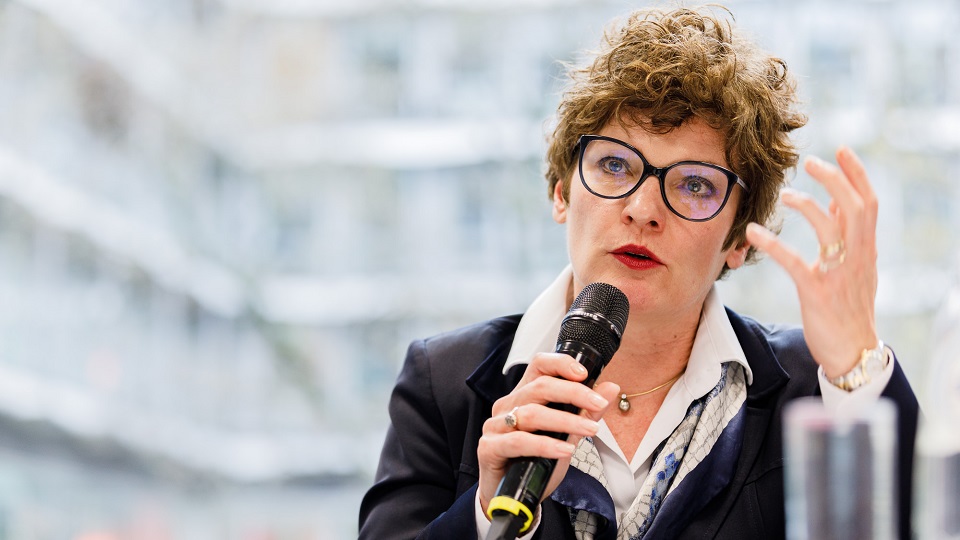TEN-T and New Silk Road integration – top priority in 2020 27/12/19
< Retour à la listeTEN-T and New Silk Road integration – top priority in 2020
Making TEN-T and New Silk Road work together, for nations and businesses large and small, could be the biggest challenge in the coming twelve months, said delegates from government and industry at the European Silk Road Summit in Venlo.
ntegrating the finely drawn lines of the Trans-European Transport Network with the broad-brush strokes of China’s Belt and Road Initiative, is proving a major task for administrators. Resolving those issues could open the doors to a whole new sector of trans-continental freight operations, and boost the EU economy. Moves are being made all along the New Silk Road to achieve just that.
It’s been almost two years since the European Commission (the executive arm of the EU) issued a briefing, based on its own independently instructed research. “Predicting the effect of the BRI on the transport network is particularly challenging as there is no clear definition or programme for the BRI,” said the briefing. Those words were echoed by Maja Bakran Marcich, Deputy Director-General, Mobility and Transport, at the European Commission, who addressed Summit delegates in Venlo, in The Netherlands.
Standards challenges
Ms Bakran Marcich spoke from a position of experience in the complicated matters of integration. She’s been decorated in both Zagreb and Paris for handling the elevation of her native Croatia to the EU. The wider TEN-T project, which covers many other aspects of communication and connectivity, seems no less complicated. Already, it’s over two decades old, and while it has so far changed the way rail freight moves around Europe, the Chinese BRI has made huge progress in a much shorter time, since it was formally announced by President Xi in 2013. The issue, accord to Bakran Marcich, rests with the multiple nations and multiple standards that pre-exist in Europe. “The challenges of making the TEN-T integration successful were more difficult than making BRI integrate with the European network,” she said.
Text continues below the picture

Maja Bakran Marcich, source: Friends of Europe Flickr
Given that the BRI initiative is not as tightly defined as the TEN-T project, it’s not always possible to distinguish trade specifically generated by the BRI from the wider trade between the Far East and Europe. “Investments attributed to the BRI are only a small part of the overall investment which will be made anyway by the owners and managers of air, sea, rail and road infrastructure across Eurasia,” says the Commission’s briefing. That accountability issue, as reported recently in RailFreight.com, is perhaps why it’s only in this month that proposals have been put forward, by the EU’s policy body, the European Council, to harmonise administrative procedures, and get TEN-T core completion back on schedule for 2030.
Local heroes
The sheer scale of both projects seems daunting to all but the governmental and multi-national players in the logistics chain, but there’s a huge potential volume of trade in the hands of smaller, local operators. Ziwei Liu, of New Silk Road Network in Bremen, says that potential is about to be realised, and this coming year could see a significant change.
Her company, set up specifically to facilitate what Ms Liu calls “local heroes” along the Silk Road, and to simplify and economise the logistics chain, recognises the challenges the EU seeks to address. “If you look at the market as a whole, much of the cargo handling is not controlled by the big companies,” she says. “The majority are small and medium-sized companies of up to a few hundred people. They don’t have the international exposure, global branding or network to leverage the benefits from the BRI, which is a great pity because there is so much potential. We want to give them the ability to run the same level of services big companies can offer around the world.”
Text continues below the picture

Ziwei Liu, source: New Silk Road Network
Adding that traffic to the network would give added impetus to the TEN-T project, and is exactly the goal of Maja Bakran Marcich. “Railways cover the world, but there are many different standards. Making them work together is a huge job. The Commission’s overall objective is interoperability and sustainable connectivity between two initiatives.” To that end, the Commission’s joint study on sustainable railway corridors has no less an objective than interoperability and connectivity between the two initiatives.
Expertise and exposure
It’s not just about making trains run smoothly. Ziwei Liu of New Silk Road Network says that companies like hers are at the forefront of integrating the manufacturing and supply chains too, and realising the full potential of that future rail harmonisation. “There are many new hubs emerging along the new Silk Road, and we want to have a specialist in every one of those countries. We are searching for niche players, for local heroes, because they have great expertise in their area, but usually have a lack of international exposure.”
Given the willingness of the Chinese government to expand the BRI for its economic and diplomatic agenda, and the EU’s need to integrate the TEN-T project for the sustainability of the Union, the words of Chinese Diplomat Chen Ribao, who addressed the Summit with a Chinese proverb, seem more than apt.”Even the mountains and the seas cannot separate people with common goals.”





